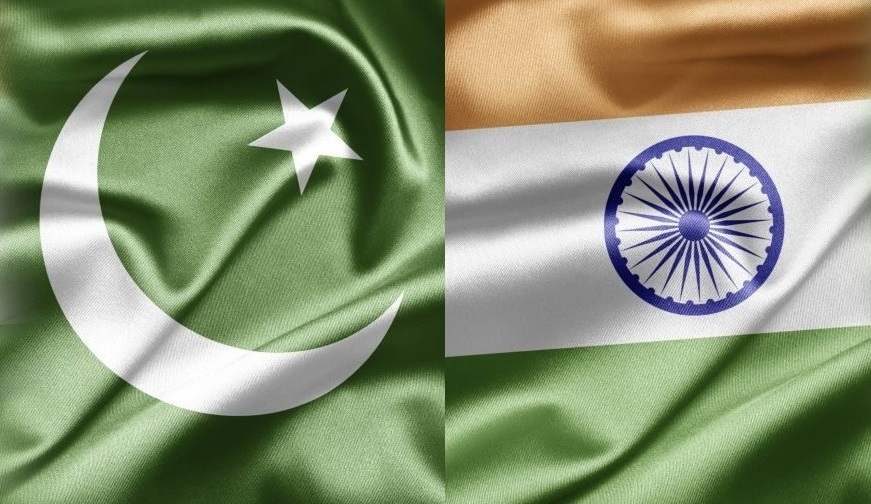By Mirza Abdul Aleem Baig
The “Asian Century” is a term that captures the vision of Asia’s emerging dominance in the global order, where its economic, technological, cultural, and political influence would shape world affairs. This idea has been bolstered as Asia’s economies have grown to account for over 60% of the world’s GDP, with countries like China, India, Japan, and Southeast Asian nations driving global innovation, production, trade and technology.

The realization of this vision, however, depends heavily on the stability and cooperation within Asia, particularly among key nations like Pakistan and India. These neighbors, with shared histories and complex ties, play a pivotal role in the region’s stability. Their peaceful coexistence and collaboration would benefit not only Asia but the entire Global South, fostering a path toward more balanced global development.
The Global South, which broadly includes Latin America, Africa, and much of Asia, is united by shared histories of colonialism and current struggles for equitable global development. Both Pakistan and India are influential voices within the Global South, advocating for fairer economic policies, greater equity in international trade, and more significant roles in global governance.
Peaceful relations between these two countries would amplify Asia’s voice within the Global South, offering a model of regional unity that other areas could emulate. In a world that has often been dominated by Western narratives and institutions, a cooperative Asia would strengthen the bargaining position of the Global South, contributing to a more multipolar and balanced world order.
Economic potential is one of the most powerful aspects of a peaceful relationship between Pakistan and India, offering benefits that resonate across the Global South. The economies of both countries are endowed with natural resources, human capital, and unique industries that could flourish if trade are normalized.
As it stands, despite a long cease-fire along the border, trade and civil society engagement between Pakistan and India have weakened, constrained by political tensions and mistrust. In a peaceful scenario, open borders could allow trade to expand, creating efficiencies and lowering costs not only for the two countries but also for the wider region. The resulting economic dynamism would extend to the Global South, showcasing how regional cooperation in trade and development can drive economic growth that transcends political boundaries.
Pakistan’s strategic location links South Asia to Central Asia, the Middle East, and beyond, making it essential for regional connectivity projects that could reshape trade across the Global South. With a cooperative relationship, infrastructure projects such as energy pipelines, railways, and digital connectivity initiatives could seamlessly connect South Asia to Central Asia and the Gulf region, allowing goods, energy, and information to flow more freely.
Such connectivity could reduce trade costs and open up markets, stimulating economic growth across the Global South and improving Asia’s role as a global logistics and trade center. As supply chains strengthen across these regions, Asia could more easily support Latin America and Africa’s emerging economies, facilitating South-South cooperation that would redefine global trade patterns and decrease reliance on Western economies.
Security is another aspect where peace between Pakistan and India would bring significant benefits to the Global South. Both countries cope with terrorism, organized crime, and cross-border security threats, which drain resources and hinder economic and social progress. Peaceful coexistence would make it easier for Pakistan and India to cooperate on security and counterterrorism initiatives, potentially setting a precedent for other countries in the Global South facing similar issues.
By stabilizing their borders, both nations could focus more on addressing social and economic issues rather than diverting resources to defense spending. The collaboration could inspire a security model for the Global South, where countries prioritize shared challenges, reinforcing each other’s stability.
Cultural ties between Pakistan and India further underscore the importance of peaceful relations. Despite political conflicts, they share deep cultural, linguistic, and historical roots that could serve as a foundation for cultural and science diplomacy. By fostering science exchanges and people-to-people interactions, both nations could reduce social and political tensions, modeling scientific cooperation for the Global South.
In doing so, they could support a regional identity that emphasizes peace and collaboration over historical grievances. This bridge would show how shared heritage can be a unifying force in the Global South, emphasizing connections over differences.
On the global stage, a peaceful and collaborative relationship between Pakistan and India would strengthen the political and diplomatic influence of the Global South. United or aligned on global platforms, these two countries could exert a more robust influence on key issues affecting the Global South, e.g., climate change, sustainable development, and economic justice.
Climate change is a critical issue for both Pakistan and India, as both countries face severe vulnerabilities due to water scarcity, extreme weather events, and agricultural disruption. A unified approach could lead to South Asian leadership in international climate discussions, providing a model of regional solidarity within the Global South. A united stance on climate adaptation and resilience would amplify Asia’s and, by extension, the Global South’s voice in international negotiations, advocating for solutions that consider the unique challenges faced by developing nations.
The vision of the Asian Century hinges on building trust, respect, and cooperation among Asian nations, qualities that would foster greater unity across the Global South. Pakistan and India, with their significant populations, resources, and economic potential, could serve as the bedrock of this transformation by setting aside historical grievances in favor of a shared future. Their cooperation would send a strong message to the world, demonstrating that unity is possible even where there is a complex past.
Indo-Pak harmony could offer a blueprint for the Global South, illustrating that collaboration and peaceful coexistence can enhance collective prosperity. Through cooperation, South Asia could play a transformative role in the 21st century, reinforcing Asia’s position as a global leader and empowering the Global South to reshape the global landscape into one that is more equitable, sustainable, and inclusive.
Author: Mirza Abdul Aleem Baig – President of Strategic Science Advisory Council (SSAC) – Pakistan. He is an independent observer of global dynamics, with a deep interest in the intricate working of techno-geopolitics, exploring how science & technology, international relations, foreign policy and strategic alliances shape the emerging world order.
(The views expressed in this article belong only to the author and do not necessarily reflect the views of World Geostrategic Insights).







